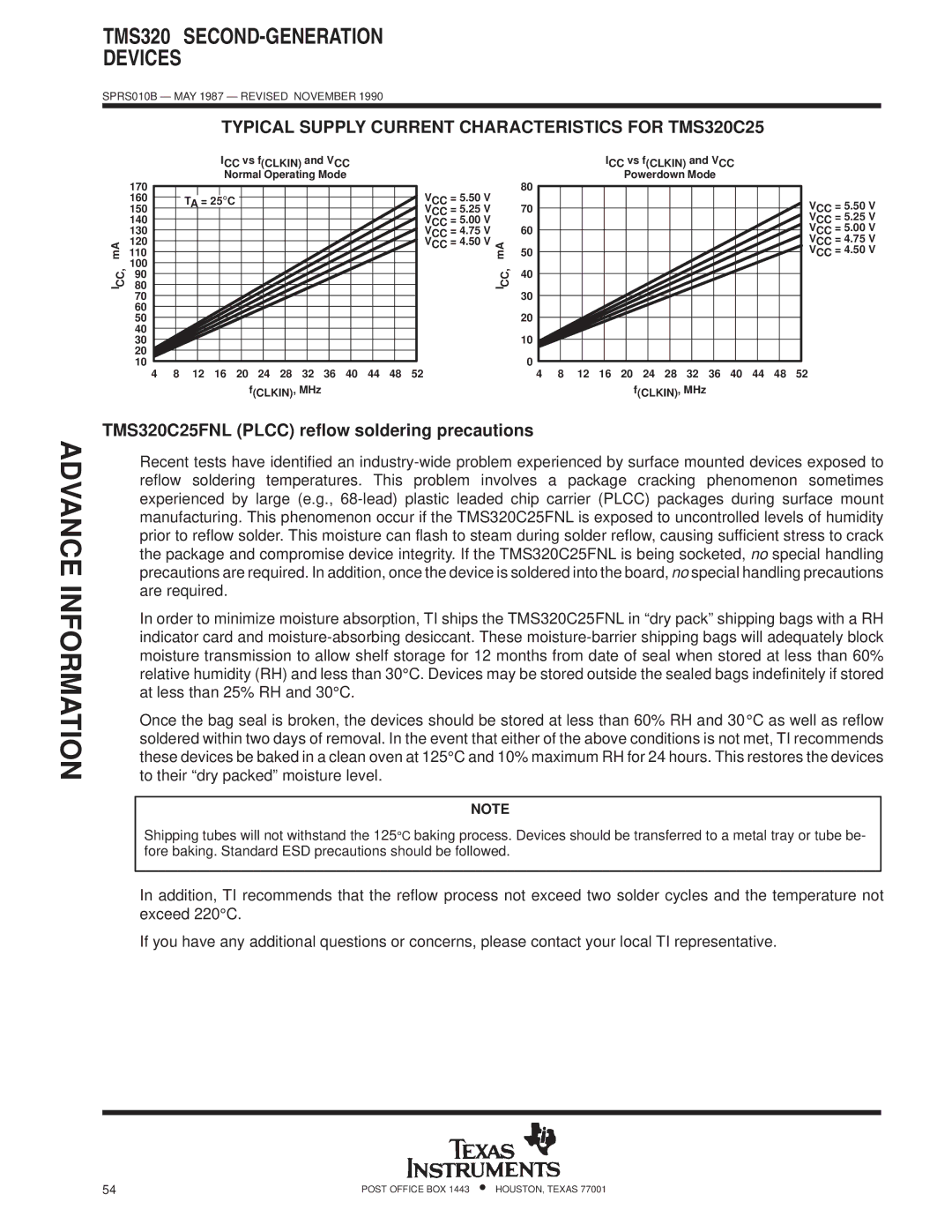
TMS320 SECOND-GENERATION
DEVICES
SPRS010B Ð MAY 1987 Ð REVISED NOVEMBER 1990
TYPICAL SUPPLY CURRENT CHARACTERISTICS FOR TMS320C25
ICC vs f(CLKIN) and VCC | ICC vs f(CLKIN) and VCC |
Normal Operating Mode | Powerdown Mode |
ICC, mA
170
160TA = 25°C
140
130
120
110
100
90
80
70
60
50
40
30
20
10
48 12 16 20 24 28 32 36 40 44 48 52 f(CLKIN), MHz
VCC = 5.50 V VCC = 5.25 V VCC = 5.00 V VCC = 4.75 V VCC = 4.50 V
ICC, mA
80
70
60
50
40
30
20
10
0
48 12 16 20 24 28 32 36 40 44 48 52 f(CLKIN), MHz
VCC = 5.50 V VCC = 5.25 V VCC = 5.00 V VCC = 4.75 V VCC = 4.50 V
ADVANCE INFORMATION
TMS320C25FNL (PLCC) reflow soldering precautions
Recent tests have identified an
In order to minimize moisture absorption, TI ships the TMS320C25FNL in ªdry packº shipping bags with a RH indicator card and
Once the bag seal is broken, the devices should be stored at less than 60% RH and 30°C as well as reflow soldered within two days of removal. In the event that either of the above conditions is not met, TI recommends these devices be baked in a clean oven at 125°C and 10% maximum RH for 24 hours. This restores the devices to their ªdry packedº moisture level.
NOTE
Shipping tubes will not withstand the 125°C baking process. Devices should be transferred to a metal tray or tube be- fore baking. Standard ESD precautions should be followed.
In addition, TI recommends that the reflow process not exceed two solder cycles and the temperature not exceed 220°C.
If you have any additional questions or concerns, please contact your local TI representative.
54 | POST OFFICE BOX 1443 • HOUSTON, TEXAS 77001 |
